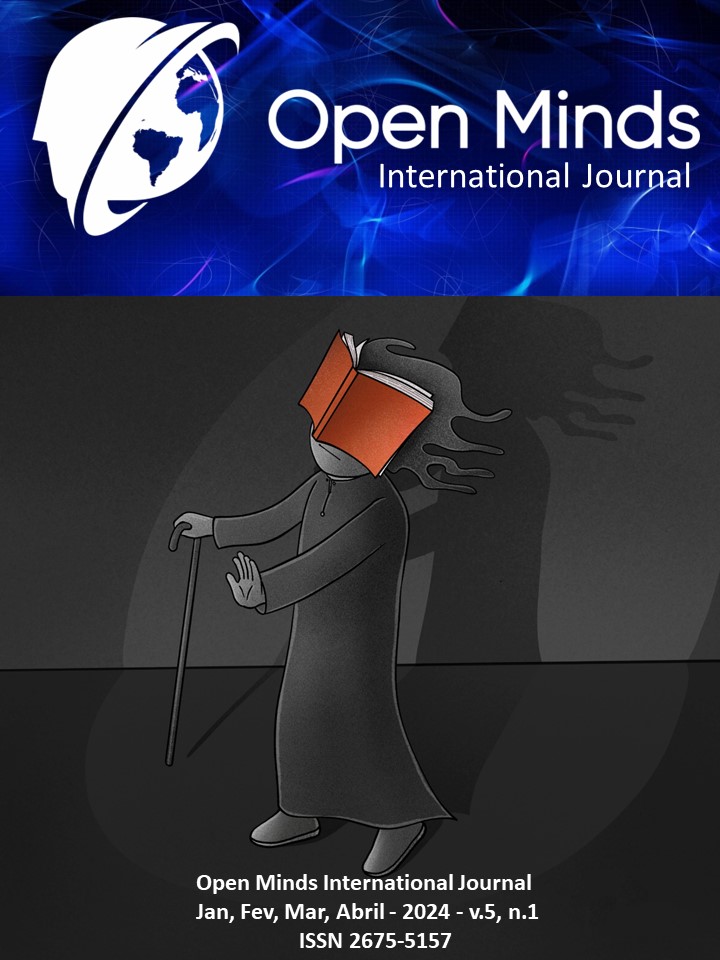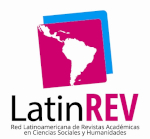BRINCAR NA EDUCAÇÃO INFANTIL NO CONTEXTO DA BNCC: uma revisão integrativa
DOI:
https://doi.org/10.47180/omij.v5i1.295Palavras-chave:
Brincar. BNCC. Educação Infantil.Resumo
O ato de brincar, permite a criança diferentes aprendizagens, deixando-a apropriar-se do conhecimento, desenvolvendo habilidades relacionadas a esfera da linguagem, da cognição, dos valores e da vida em sociedade. O presente artigo tem como objetivo analisar o brincar na Educação Infantil no contexto da BNCC, em artigos publicados nos anos de 2021 e 2022. Para tanto, foi realizada uma pesquisa bibliográfica integrativa e documental, tendo como referência o documento da Base Nacional Curricular para a Educação Infantil. Primeiramente, apresenta-se um breve estudo teórico sobre a concepção de criança e infância no aspecto histórico, as características das instituições pensadas para crianças de zero a cinco anos de idade, a educação infantil na legislação brasileira e a importância do brincar como um direito de aprendizagem e desenvolvimento na infância. Portanto, conclui-se que o brincar na infância é parte imprescindível da aprendizagem e do desenvolvimento integral da criança nos aspectos físico, social, cultural, afetivo, emocional e cognitivo.
Downloads
Referências
ALMEIDA, P. N. de. Educação lúdica: técnicas e jogos pedagógicos. São Paulo, SP: Loyola, 2008.
AQUINO. L. As políticas sociais para a infância a partir de um olhar sobre a história da criança no Brasil. In: Romam, e. d.; Steyer, v. e. A criança de 0 a 6 anos e a educação infantil: um retrato multifacetado. Ulbra, 2001.
ARIÈS, P. História Social da criança e da família. Rio de Janeiro: LTC, 1981.
ARROYO, M. G. Corpos resistentes produtores de culturas corporais. Haverá lugar na Base Nacional Comum? Motrivivência, v. 28, n. 48, p. 15-31, set., 2016. DOI: https://doi.org/10.5007/2175-8042.2016v28n48p15
BARBOSA, R. F. M., DEL RIO MARTINS, R. L., & MELLO, A. DA S. (2019). A educação infantil na base nacional comum curricular: avanços e retrocessos. Movimento-Revista de educação, n. 10, 147-172. Disponível em: https://doi.org/10.22409/mov.v0i10.536. Acesso em: 27 out. de 2022. DOI: https://doi.org/10.22409/mov.v0i10.536
BARBOSA, R. F. M; MARTINS, R. L; MELLO, A. S. Brincadeiras lúdico-agressivas: Tensões e possibilidades no cotidiano na Educação Infantil. Movimento, Porto Alegre, p. 159-170, mar. 2017. DOI: https://doi.org/10.22456/1982-8918.65259
BASTOS. M. H. C. Jardim de Crianças – o pioneirismo do Dr. Menezes Vieira (1875- 1887). In: MONARCHA. C. Educação da infância brasileira 1875 – 1983. Campinas: Autores Associados, 2001.
BRASIL. Constituição da República Federativa do Brasil. Brasília, DF: Senado Federal, 1988, 305p.
BRASIL. Estatuto da criança e do Adolescente. Brasília. Lei 8069, de 13 de julho de 1990.
BRASIL. Ministério da Educação. Base Nacional Comum Curricular. Disponível em: http://basenacionalcomum.mec.gov.br/. Acesso em: 27 set. de 2022.
BRASIL. Referencial Curricular Nacional para a Educação Infantil. Ministério da Educação e do Desporto, Secretaria de Educação Fundamental. Brasília, MEC/SEF, 1998.
CARVALHO, E. M. G. Educação infantil: percurso, dilemas e perspectivas. Ilhéus: Editus, 2003.
COOPER, H. M. Interating research: um guia para revisões de literatura. 2.ed. Newbury Park. Sage, 1989.
DIDONET, Vital. Creche a que veio... para onde vai... In: DIDONET, Vital (org). Em Aberto – Educação Infantil: a creche, um bom começo. Instituto Nacional de Estudos e Pesquisas Educacionais, v. 18, n.73, Brasília, 2001, p. 11-27.
GONÇALVES, R. M; PEIXOTO, L. F. Em defesa dos currículos praticados pensados nos cotidianos escolares. In: REUNIÃO CIENTÍFICA ANPED NORTE, 1., 2016, Belém. Anais... Belém: Anped, 2016, p. 2009-2021.
HUIZINGA, J. Homo Ludens: o jogo como elemento de cultura. São Paulo, Editora Perspectiva, 2001.
KRAMER, S; LEITE, M. I. Infância: Fios e Desafios da Pesquisa. São Paulo: Papirus. 2003.
KISHIMOTO, T. M. Jogo, brinquedo, brincadeira e a educação. 7. ed. São Paulo: Cortez, 1996.
KUHLMANN, J. M. Infância e educação infantil: uma abordagem histórica. 5. ed. Porto Alegre: Mediação, 2010.
VALADARES, J. A. MOREIRA, M. A. (2009). A teoria da aprendizagem significativa: sua fundamentação e implementação. Coimbra: Edições Almedina. 133p.
OLIVEIRA, V. B. O brincar e a criança do nascimento aos seis anos. Petrópolis, RJ: Vozes, 2000.
OLIVEIRA. Z. M. R. Educação infantil: fundamentos e métodos. São Paulo: Cortez, 2005.
ROUSSEAU, J. J. Emílio ou da educação. São Paulo: Martins fontes, 1994.
VYGOTSKI, L. S. A construção do pensamento e da linguagem. São Paulo: Martins Fontes, 2009.
VYGOTSKY, L.S. A formação social da mente. 7. ed. São Paulo: Martins Fontes, 2007.
Downloads
Publicado
Como Citar
Edição
Seção
Licença
Copyright (c) 2024 Open Minds International Journal

Este trabalho está licenciado sob uma licença Creative Commons Attribution-NonCommercial-NoDerivatives 4.0 International License.
Os autores declaram que qualquer trabalho apresentado, se aceito, não será publicado em outro meio/lugar, em inglês ou em qualquer outra língua, e inclusive por via eletrônica, salvo mencione expressamente que o trabalho foi originalmente publicado na Revista.













